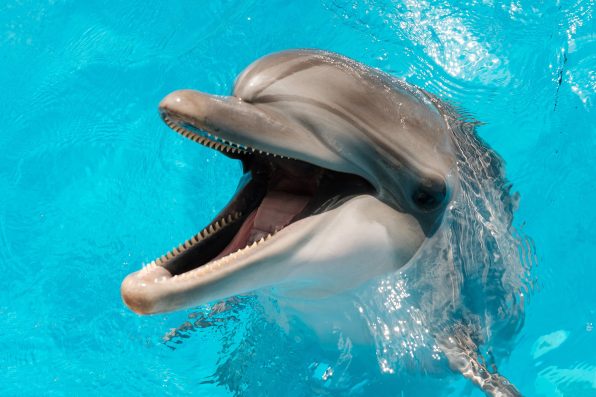While bottlenose dolphins are playing together, they “smile” at each other, making “open-mouth” facial expressions as a way to communicate during social interactions. The dolphins almost always use facial expressions when they are in their playmate’s field of vision.
When the dolphins perceived a “smile,” they would respond with one themselves 33 percent of the time. The new findings may help scientists learn more about the evolution of mammals, including humans.
“Open-mouth signals and rapid mimicry appear repeatedly across the mammal family tree, which suggests that visual communication has played a crucial role in shaping complex social interactions, not only in dolphins but in many species over time,” said Elisabetta Palagi, a study co-author and an evolutionary biologist at the University of Pisa in Italy.
Dolphin play involves acrobatics, surfing, chasing, play-fighting, and playing with objects. Other mammals use facial expressions to communicate socially during playtime, but the behavior had never been explored in marine mammals before.
Researchers noticed that bottlenose dolphins (Tursiops truncatus) living in captivity typically made open-mouth facial expressions while playing together.
However, they did not seem to “smile” in other situations. So, they wanted to investigate whether the dolphins visually communicated playfulness.
They captured 80 hours of video footage of 22 bottlenose dolphins while they were playing in pairs and while they were playing with their human trainers.
The dolphins lived at two wildlife parks: Zoomarine Rome in Italy and Planète Sauvage in France.
After analyzing the recordings, the researchers counted a total of 1,288 open-mouth displays during social play sessions.

Sign up for Chip Chick’s newsletter and get stories like this delivered to your inbox.


